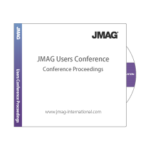Ryoji Mizutani
Hybrid Vehicle Advanced Technology Engineering Div., TOYOTA MOTOR CORPORATION
Abstract
In this presentation, we will discuss solution case studies using FEM, focusing on specific motor design issues taking into account motor needs such as performances and driving conditions.
Automotive motors are required to be high-powered, high-efficiency and high productivity. It was necessary to use high performance magnets in Toyota and we began to develop high performance motors using Nd-Fe-B magnets invented in the 1980s.
The first project was development of built-in motors with large torque for production equipments. We improved design method and production technology of motor using Nd-Fe-B magnets. Those motors were application-oriented motors in performance, shape and structure. During this time, FEM electromagnetic field analysis technology made large advances and contributed to meet the required torque characteristics of motors.
The second project was development of several application motors for automobiles. Their design issues were higher-performance in both torque and power, higher-efficiency, and extreme conditions in temperature and power source fluctuation. 3-D FEM and multiphysics analysis contributed to achieve the optimal design for required motors.
You need to sign in as a Regular JMAG Software User (paid user) or JMAG WEB MEMBER (free membership).
By registering as a JMAG WEB MEMBER, you can browse technical materials and other member-only contents for free.
If you are not registered, click the “Create an Account” button.
Create an Account Sign in



